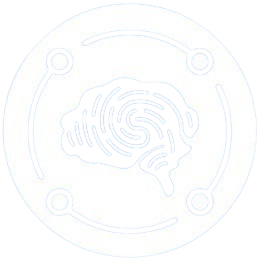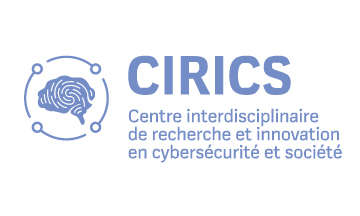

de Recherche et d’Innovation
en Cybersécurité et Société
Sert, O. P.; Potvin, S.; Lipp, O.; Dellazizzo, L.; Laurelli, M.; Breton, R.; Lalonde, P.; Phraxayavong, K.; O'Connor, K.; Pelletier, J. -F.; Boukhalfi, T.; Renaud, P.; Dumais, A.
Virtual reality therapy for refractory auditory verbal hallucinations in schizophrenia: A pilot clinical trial Journal Article
In: Schizophrenia Research, vol. 197, pp. 176–181, 2018, ISSN: 09209964, (Publisher: Elsevier B.V.).
Abstract | Links | BibTeX | Tags: adult, article, auditory hallucination, auditory verbal hallucination, clinical article, clinical effectiveness, computer assisted therapy, Computer-Assisted, controlled study, Cross-Over Studies, crossover procedure, disease severity, distress syndrome, female, follow up, Follow-Up Studies, hallucination, Hallucinations, human, Humans, male, Middle Aged, neuroleptic agent, outcome assessment, Outcome Assessment (Health Care), phase 2 clinical trial, physiology, Pilot Projects, pilot study, priority journal, procedures, psychotherapy, quality of life, randomized controlled trial, schizophrenia, Speech Perception, symptom, Therapy, therapy delay, therapy effect, treatment duration, treatment response, virtual reality, virtual reality exposure therapy
@article{du_sert_virtual_2018,
title = {Virtual reality therapy for refractory auditory verbal hallucinations in schizophrenia: A pilot clinical trial},
author = {O. P. Sert and S. Potvin and O. Lipp and L. Dellazizzo and M. Laurelli and R. Breton and P. Lalonde and K. Phraxayavong and K. O'Connor and J. -F. Pelletier and T. Boukhalfi and P. Renaud and A. Dumais},
url = {https://www.scopus.com/inward/record.uri?eid=2-s2.0-85042420594&doi=10.1016%2fj.schres.2018.02.031&partnerID=40&md5=fe98669ecfdfb69d05cc9ebb58fecdcc},
doi = {10.1016/j.schres.2018.02.031},
issn = {09209964},
year = {2018},
date = {2018-01-01},
journal = {Schizophrenia Research},
volume = {197},
pages = {176–181},
abstract = {Schizophrenia is a chronic and severe mental illness that poses significant challenges. While many pharmacological and psychosocial interventions are available, many treatment-resistant schizophrenia patients continue to suffer from persistent psychotic symptoms, notably auditory verbal hallucinations (AVH), which are highly disabling. This unmet clinical need requires new innovative treatment options. Recently, a psychological therapy using computerized technology has shown large therapeutic effects on AVH severity by enabling patients to engage in a dialogue with a computerized representation of their voices. These very promising results have been extended by our team using immersive virtual reality (VR). Our study was a 7-week phase-II, randomized, partial cross-over trial. Nineteen schizophrenia patients with refractory AVH were recruited and randomly allocated to either VR-assisted therapy (VRT) or treatment-as-usual (TAU). The group allocated to TAU consisted of antipsychotic treatment and usual meetings with clinicians. The TAU group then received a delayed 7 weeks of VRT. A follow-up was ensured 3 months after the last VRT therapy session. Changes in psychiatric symptoms, before and after TAU or VRT, were assessed using a linear mixed-effects model. Our findings showed that VRT produced significant improvements in AVH severity, depressive symptoms and quality of life that lasted at the 3-month follow-up period. Consistent with previous research, our results suggest that VRT might be efficacious in reducing AVH related distress. The therapeutic effects of VRT on the distress associated with the voices were particularly prominent (d = 1.2). VRT is a highly novel and promising intervention for refractory AVH in schizophrenia. © 2018},
note = {Publisher: Elsevier B.V.},
keywords = {adult, article, auditory hallucination, auditory verbal hallucination, clinical article, clinical effectiveness, computer assisted therapy, Computer-Assisted, controlled study, Cross-Over Studies, crossover procedure, disease severity, distress syndrome, female, follow up, Follow-Up Studies, hallucination, Hallucinations, human, Humans, male, Middle Aged, neuroleptic agent, outcome assessment, Outcome Assessment (Health Care), phase 2 clinical trial, physiology, Pilot Projects, pilot study, priority journal, procedures, psychotherapy, quality of life, randomized controlled trial, schizophrenia, Speech Perception, symptom, Therapy, therapy delay, therapy effect, treatment duration, treatment response, virtual reality, virtual reality exposure therapy},
pubstate = {published},
tppubtype = {article}
}
Maziade, M.; Bouchard, S.; Gingras, N.; Charron, L.; Cardinal, A.; Roy, M. -A.; Gauthier, B.; Tremblay, G.; Côté, S.; Fournier, C.; Boutin, P.; Hamel, M.; Mérette, C.; Martinez, M.
In: British Journal of Psychiatry, vol. 169, no. 3, pp. 371–378, 1996, ISSN: 00071250, (Publisher: Royal College of Psychiatrists).
Abstract | Links | BibTeX | Tags: Adolescent, adult, article, behavior disorder, Child, Childhood, clinical article, Delusions, Depression, developmental disorder, disease course, female, Follow-Up Studies, Hallucinations, human, Humans, male, negative syndrome, onset age, Personality Development, prediction, Psychiatric Status Rating Scales, Risk Factors, schizophrenia, Schizophrenic Psychology, Schizotypal Personality Disorder
@article{maziade_long-term_1996,
title = {Long-term stability of diagnosis and symptom dimensions in a systematic sample of patients with onset of Schizophrenia in childhood and early adolescence. II: Positive/negative distinction and childhood predictors of adult outcome},
author = {M. Maziade and S. Bouchard and N. Gingras and L. Charron and A. Cardinal and M. -A. Roy and B. Gauthier and G. Tremblay and S. Côté and C. Fournier and P. Boutin and M. Hamel and C. Mérette and M. Martinez},
url = {https://www.scopus.com/inward/record.uri?eid=2-s2.0-0029759147&doi=10.1192%2fbjp.169.3.371&partnerID=40&md5=0b5ff36c812ac906915bb5d12769135d},
doi = {10.1192/bjp.169.3.371},
issn = {00071250},
year = {1996},
date = {1996-01-01},
journal = {British Journal of Psychiatry},
volume = {169},
number = {3},
pages = {371–378},
abstract = {Background. The aim of this study was to verify the presence and stability across life of the positive/negative distinction in early-onset schizophrenia (EO-SZ) through a longitudinal factor analysis of the schizophrenic dimensions, and to identify the factors predicting several indices of long-term outcome for EO-SZ. Method. Forty children consecutively referred for DSM-III-R schizophrenia (SZ) in a specific catchment area comprised the sample. Results. Across a 14.8-year follow-up, longitudinal factor analysis identified two separate factors corresponding to the positive and negative symptom dimensions. We also observed that: the GAS rated over the last three years of adult illness and the severity of negative symptoms during the stabilised interepisode intervals in adulthood were the indices of adult outcome that were most easily predicted; and the best childhood predictors of adult outcome were premorbid functioning and severity of positive and negative symptoms during acute episodes. Conclusions. The presence of premorbid non-psychotic behaviour disturbances (NPBD) and premorbid developmental problems was not related to severity of outcome, in contrast to the former variables.},
note = {Publisher: Royal College of Psychiatrists},
keywords = {Adolescent, adult, article, behavior disorder, Child, Childhood, clinical article, Delusions, Depression, developmental disorder, disease course, female, Follow-Up Studies, Hallucinations, human, Humans, male, negative syndrome, onset age, Personality Development, prediction, Psychiatric Status Rating Scales, Risk Factors, schizophrenia, Schizophrenic Psychology, Schizotypal Personality Disorder},
pubstate = {published},
tppubtype = {article}
}



